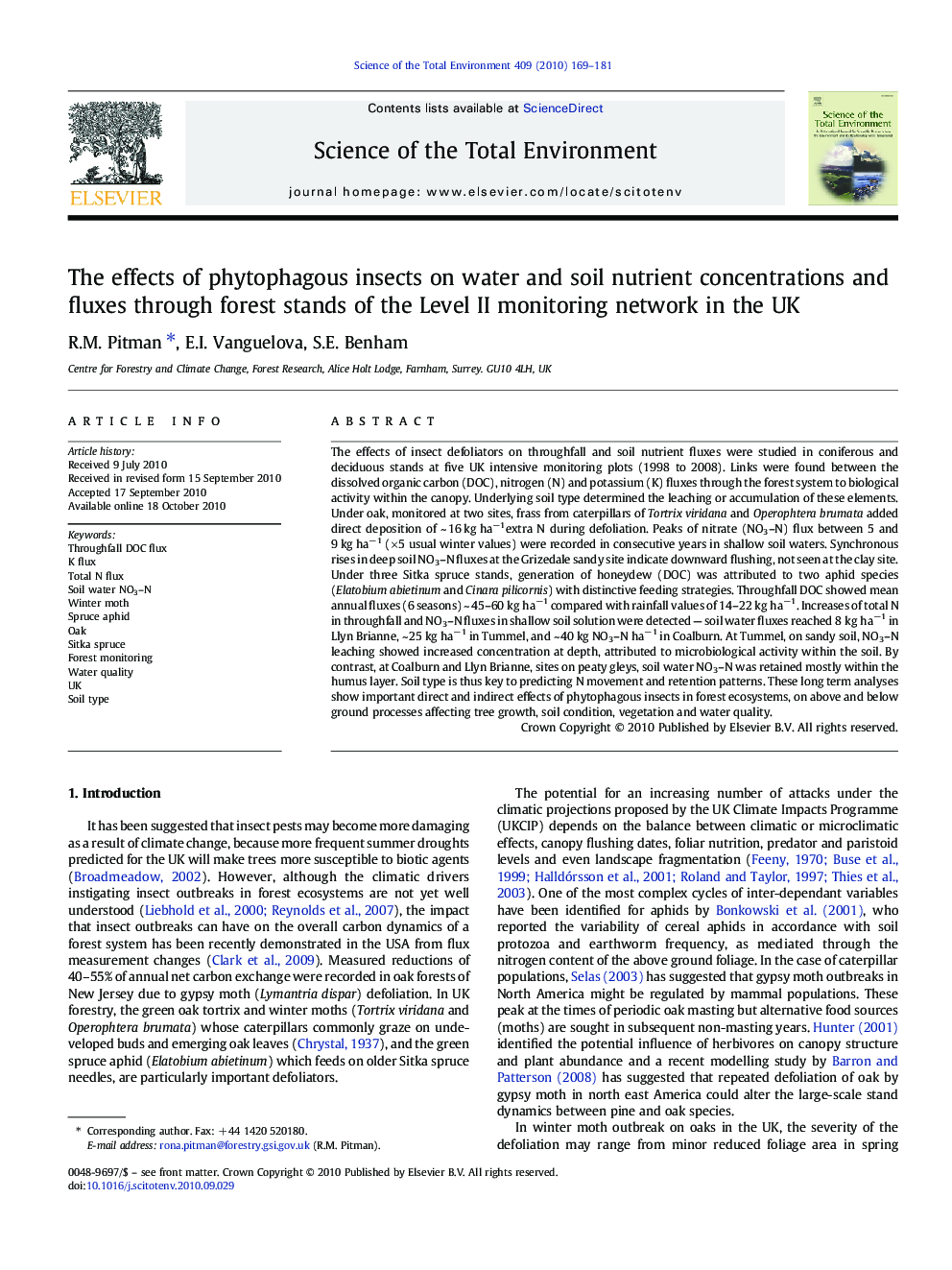| کد مقاله | کد نشریه | سال انتشار | مقاله انگلیسی | نسخه تمام متن |
|---|---|---|---|---|
| 4430304 | 1619861 | 2010 | 13 صفحه PDF | دانلود رایگان |

The effects of insect defoliators on throughfall and soil nutrient fluxes were studied in coniferous and deciduous stands at five UK intensive monitoring plots (1998 to 2008). Links were found between the dissolved organic carbon (DOC), nitrogen (N) and potassium (K) fluxes through the forest system to biological activity within the canopy. Underlying soil type determined the leaching or accumulation of these elements. Under oak, monitored at two sites, frass from caterpillars of Tortrix viridana and Operophtera brumata added direct deposition of ~ 16 kg ha−1extra N during defoliation. Peaks of nitrate (NO3–N) flux between 5 and 9 kg ha−1 (×5 usual winter values) were recorded in consecutive years in shallow soil waters. Synchronous rises in deep soil NO3–N fluxes at the Grizedale sandy site indicate downward flushing, not seen at the clay site. Under three Sitka spruce stands, generation of honeydew (DOC) was attributed to two aphid species (Elatobium abietinum and Cinara pilicornis) with distinctive feeding strategies. Throughfall DOC showed mean annual fluxes (6 seasons) ~ 45–60 kg ha−1 compared with rainfall values of 14–22 kg ha−1. Increases of total N in throughfall and NO3–N fluxes in shallow soil solution were detected — soil water fluxes reached 8 kg ha−1 in Llyn Brianne, ~ 25 kg ha−1 in Tummel, and ~ 40 kg NO3–N ha−1 in Coalburn. At Tummel, on sandy soil, NO3–N leaching showed increased concentration at depth, attributed to microbiological activity within the soil. By contrast, at Coalburn and Llyn Brianne, sites on peaty gleys, soil water NO3–N was retained mostly within the humus layer. Soil type is thus key to predicting N movement and retention patterns. These long term analyses show important direct and indirect effects of phytophagous insects in forest ecosystems, on above and below ground processes affecting tree growth, soil condition, vegetation and water quality.
Journal: Science of The Total Environment - Volume 409, Issue 1, 1 December 2010, Pages 169–181